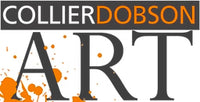In recent months, after an arduous couple of years of museums sitting empty when the world was plunged into a communal lockdown, a number of high profile figurative art exhibitions have popped up in galleries and institutes around the globe. This has brought about a resurgence in the prominence of
figurative art in popular culture.
And the trend is set to continue in throughout 2022 in locations including London's Tate Modern, The Metropoloitan Museum of Art, Melbourne's National Gallery of Victoria, and Florence's Museo Novecento.
The Tate define Figurative art or Figurativism as “any form of modern art that retains strong references to the real world and particularly to the human figure”.
Professedly, the basic theoretical principle in the creation of figurative art is the realistic representation of the subject. In Ancient Greece the sympathetic capturing of the human form was given the moniker Mimesis, meaning 'imitation’, as demonstrated beautifully in the Classical sculptures of around 400 BC.
The distinct Renaissance style which originated in Italy in around 1400 AD continued widening the boundaries of figurative art, and a pivotal point in it's evolution came in 1510 with Giorgione's oil on canvas painting Sleeping Venus, the first known Western painting to depict a reclining nude.
The rise of Neoclassicism in the 18th century propagated modernist and realist painters like Édouard Manet and Gustav Courbet, respectively, to respond by creating paintings which invoked realism and were without artificiality.
The affecting advent of abstract art, and the work of contemporary artists in the 20th century, arguably had a hindering effect on the popularity of the more traditional figurative artists of the time.
Indeed, new trends in the genre were developed to compete with the popularity of non-representational art, such as Photorealism and Pop Art, and brought with them a fresh reintroduction of identifiable figurative imagery, championed by artists like Lucien Freud and Andy Warhol.
Until June this year The Brooklyn Museum, New York, is running the exhibition Andy Warhol: Revelation, a collection of more than 100 pieces by the artist which they say “examines themes such as life and death, power and desire, the role and representation of women, Renaissance imagery, family and immigrant traditions and rituals, depictions and duplications of Christ, and the Catholic body and queer desire.”
Sitting somewhere around the centre of the spectrum between photorealistic figurative art and abstraction, Mexican artist Frida Kahlo's portraits can be termed as Figurative Surrealism. Depicting colourful and textured interpretations of (primarily) self portraits, her style is likely to have been formed from her influence by the Renaissance masters as well as Mexican folk art.
Contemporary and present day artists have since continued to bring their own style and approach to the realms of figurative art...
Lubaina Himid, who continues to create activist art, after being one of the first artists involved in the UK's Black Art movement in the 80s, focuses on “themes of cultural history and reclaiming identities”, and incorporates abstract elements within her figurative depictions drawing reference to the world around them.
Croydon born artist Chris Ross Williamson has recently created a humorous and intriguing art-within-art style collection, featuring homages to popular and high profile paintings, such as Andy Warhol's Marilyn Monroe. His characterful compositions always feature a man and his dog, whilst jovially capturing the
essence and importance of the original pieces, depicting the adoration of such pivotal pieces by audiences to this very day.
Other great examples of the merging of genres to create an altogether new kind of figurative art for the modern age include whimsical compositions from Brighton artists Sam Toft and Joe Ramm, and colourful Wirral-born Dotty Earl.
Each employ a mix of elements of abstraction, surrealism and naïve art to create wholly unique pieces which are instantly recognisable as the work of each artist.
Sam Toft centres her creations around the figures Mr and Mrs Mustard and their ever expanding menagerie, and features both elements of nature, in such pieces as the perfectly pink Time to Make Memories, and Good Day Sunshine.
Both are full of floral cheer and abstract backgrounds of swirling ice cream colours, as in Love Moves in Mysterious Ways.
Joe Ramm's narrative compositions, whilst focusing heavily on wild landscapes and the natural world, are each punctuated by their ever present female character and her canine accomplices. However dominating the scene, as with Coastguard Cottages, the viewer is always drawn to the beguiling figure and urged to contemplate her journey.
Her self proclaimed “twirly world” lends a touch of abstraction to Dotty Earl's playful figurative artwork, whilst portraying familiar scenes of washing the dishes, or doing a spot of gardening. All the while, the everyday is elevated by the elements of colour and qualities of whimsy, as can be seen in the piece The
New Dog Basket, a perceptive take on hanging out the laundry, seeing the lightness and comedy in even the most mundane of tasks.









